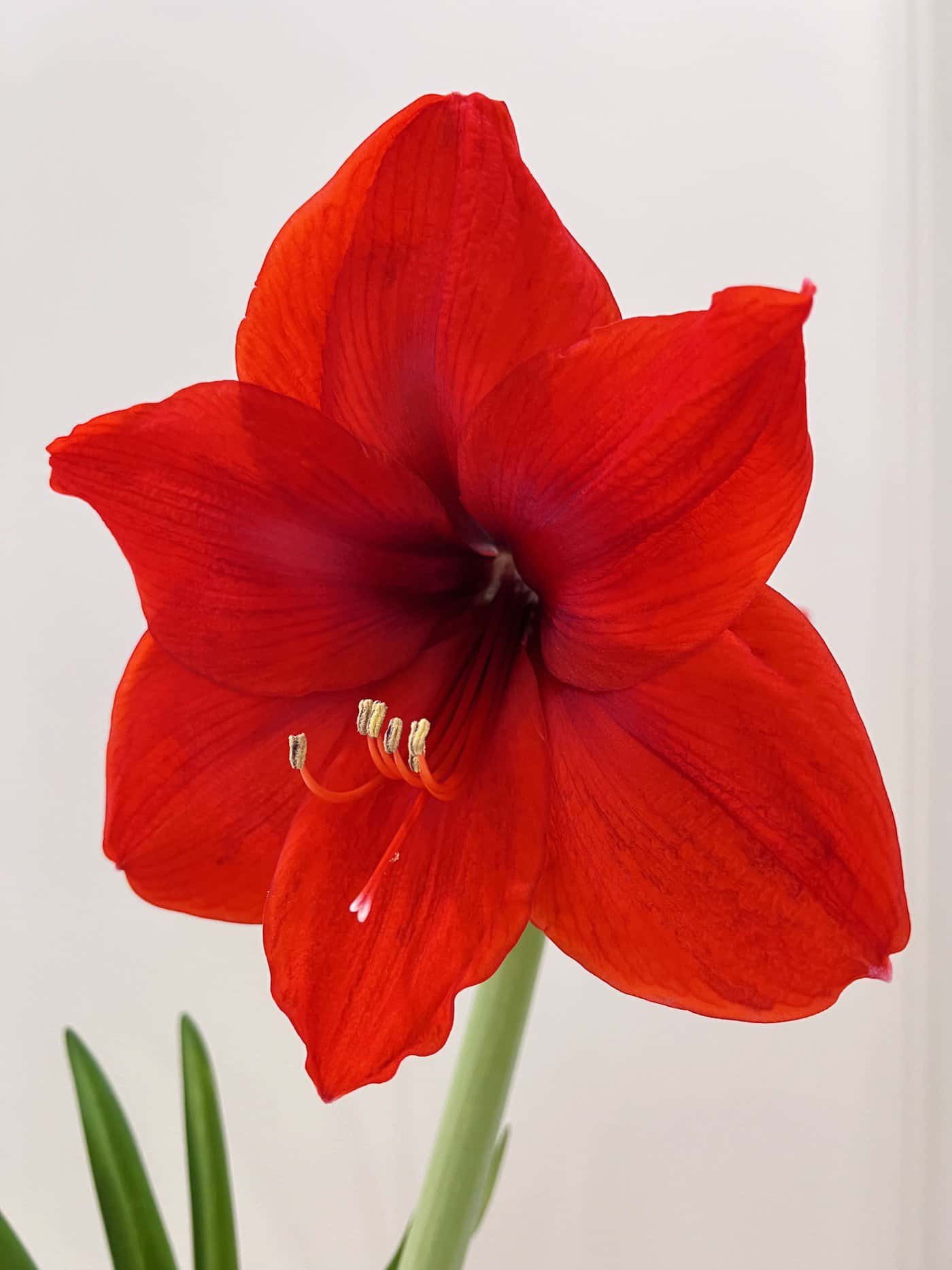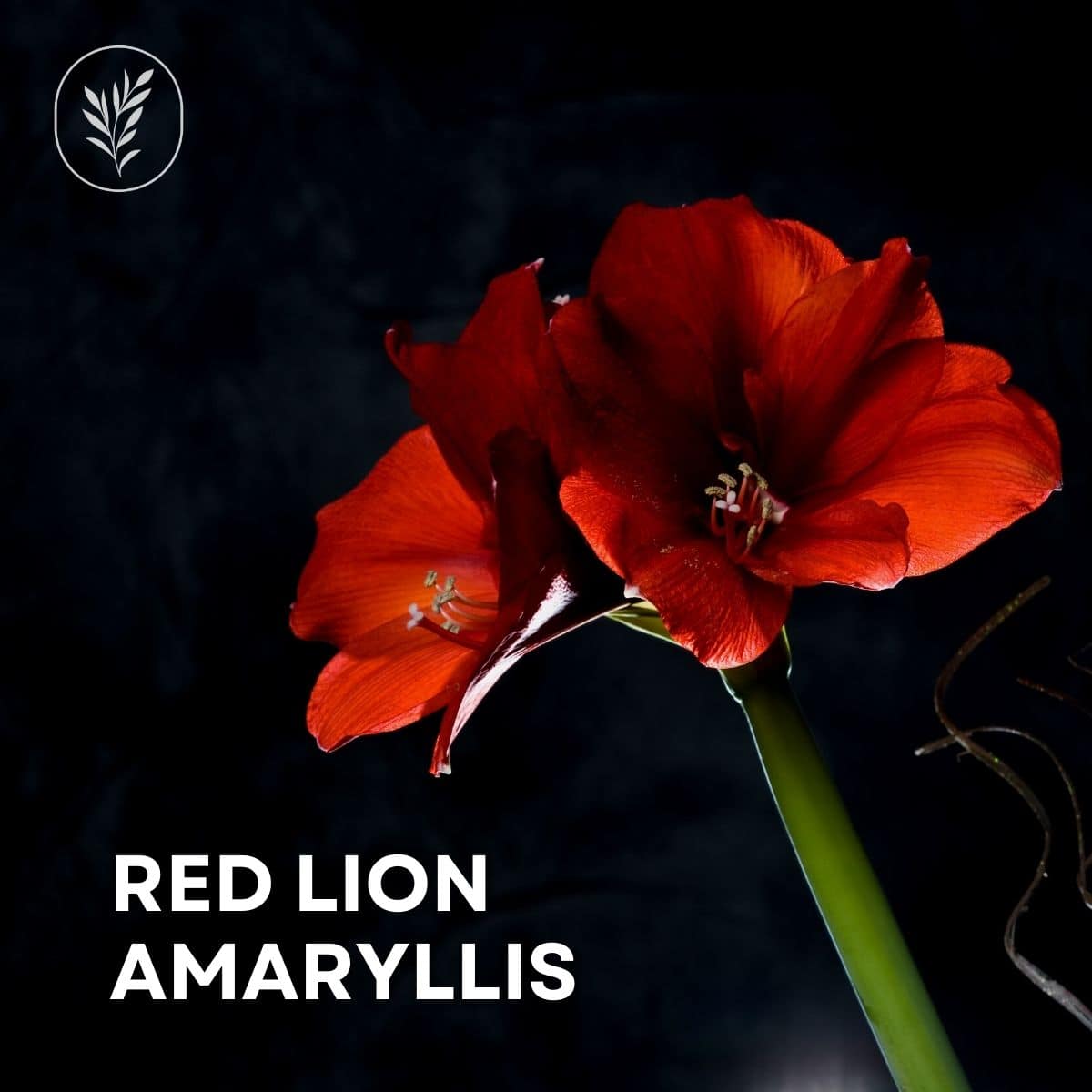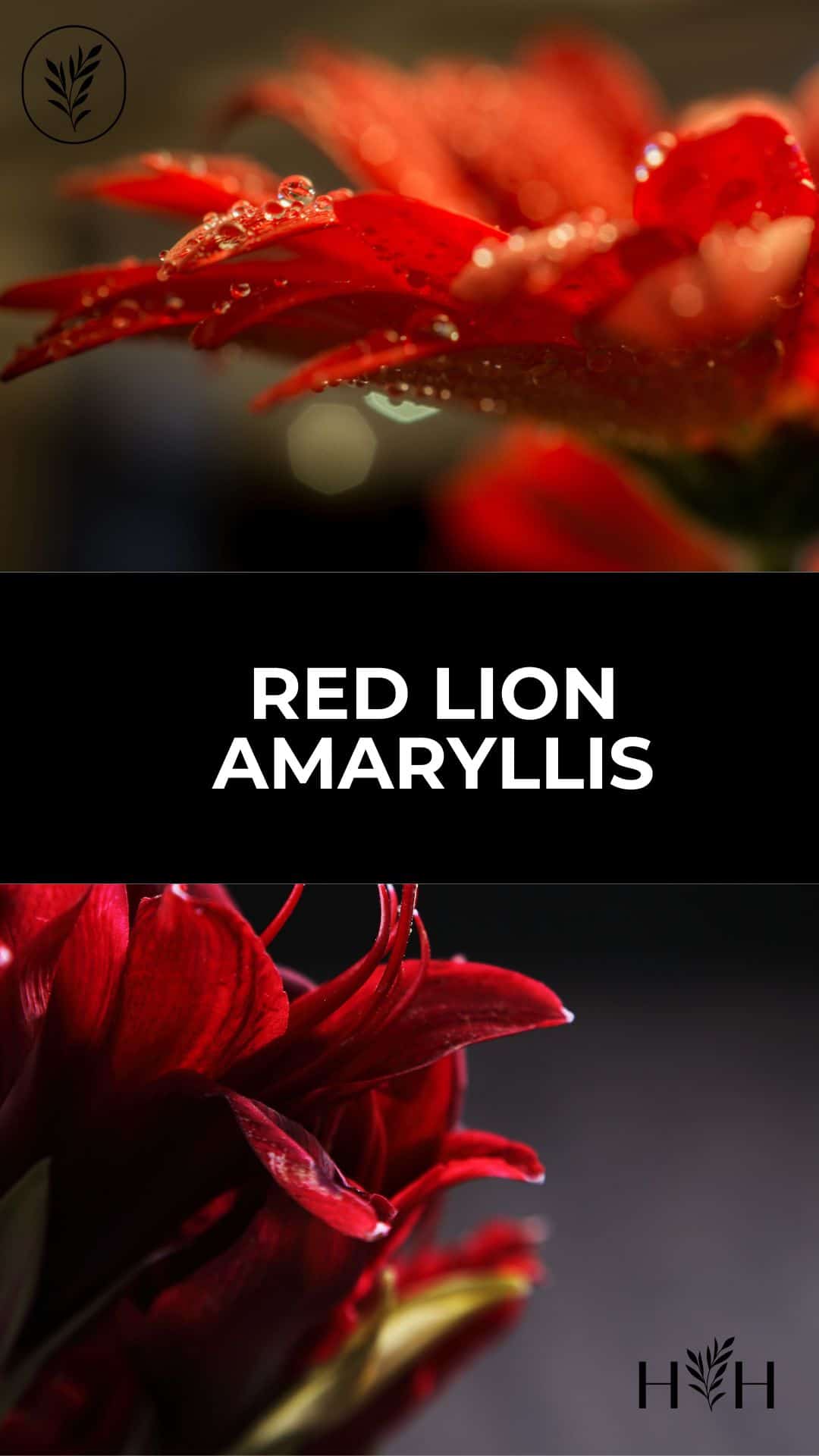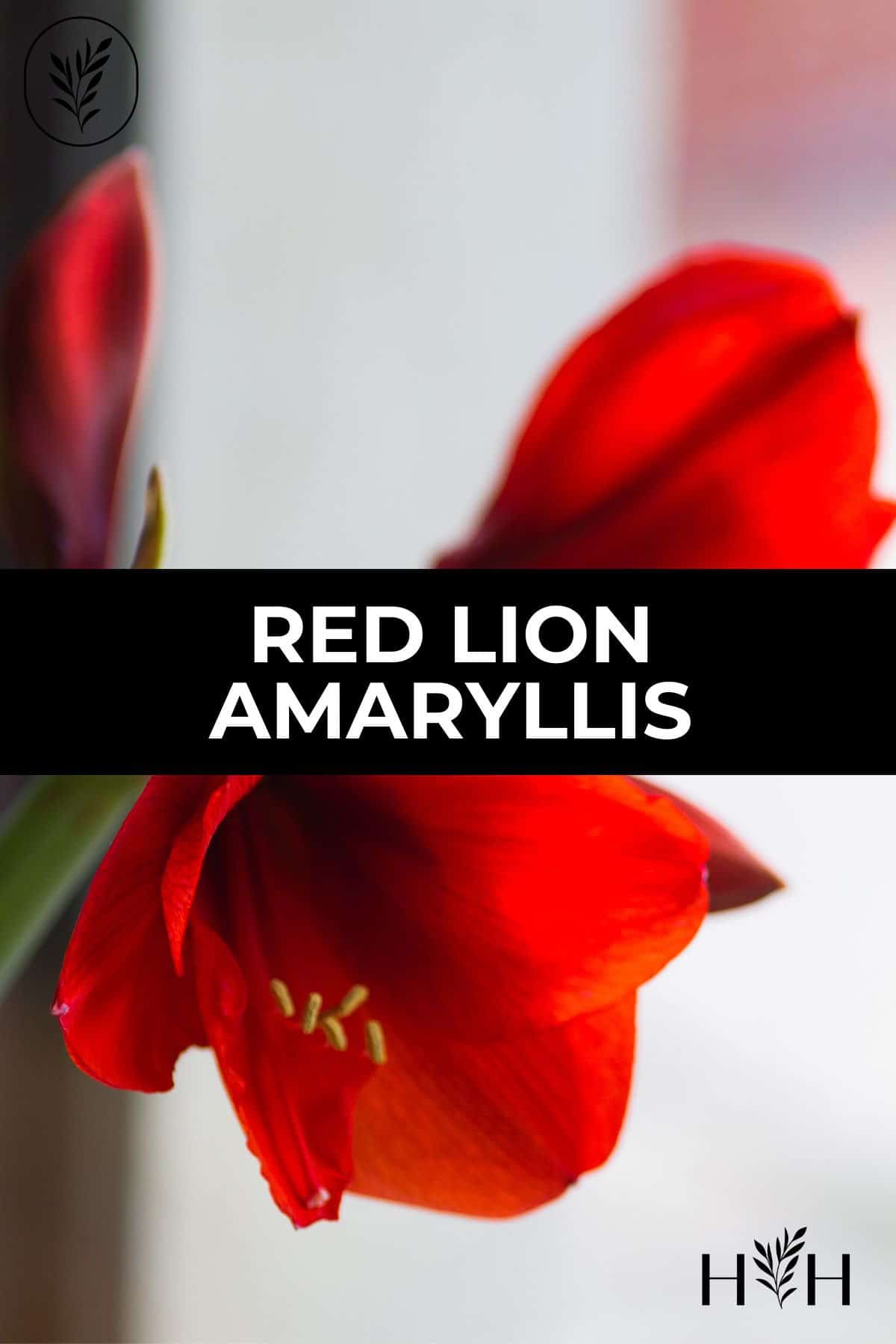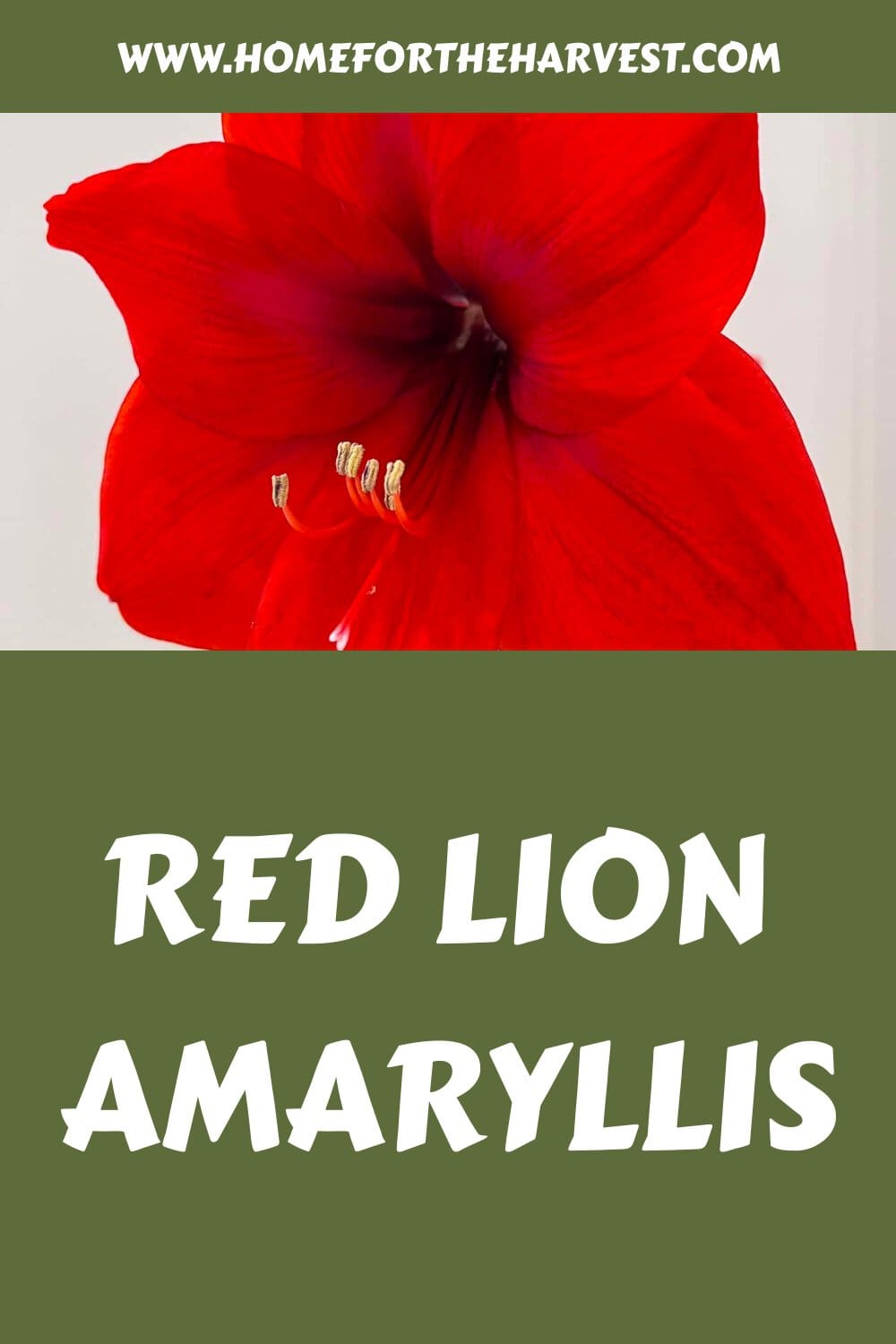The Red Lion amaryllis is a beautiful addition to your outdoor space with its bright blooms. Growing this particular type of bulb can be easy if you know what you’re doing – so let’s dive right in. In this blog post, we’ll cover everything from planting tips to troubleshooting common issues with Red Lion Amaryllis plants.
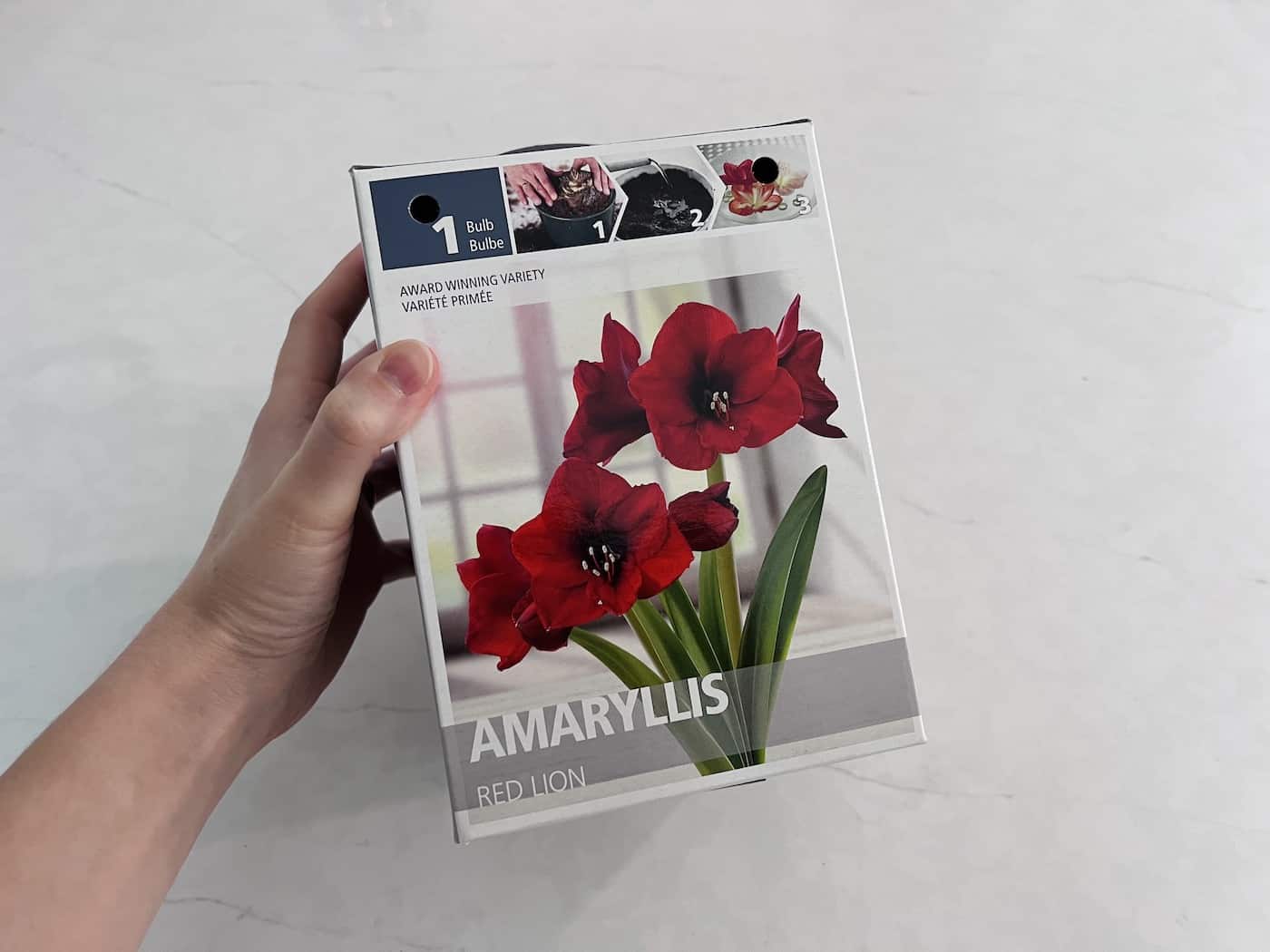
Introduction to the Red Lion Amaryllis
The Red Lion amaryllis is a beautiful and easy-to-grow flower that can bring color and life to any home. It’s native to South America, but it has become popular around the world for its bright red blooms. The Red Lion amaryllis is an ideal choice for beginner gardeners or those who want to add a touch of beauty to their homes without having to be an expert gardener.
When planting your Red Lion amaryllis bulbs, you should choose a pot with good drainage holes in the bottom and fill it with well-draining soil such as cactus mix or potting soil mixed with perlite or sand. Place the bulb in the center of the pot so that about one-third of it is above ground level and cover it lightly with soil. Water thoroughly until water runs out from the drainage holes at the bottom of the pot, then place in indirect sunlight near a window where temperatures are between 65°F – 75°F (18°C – 24°C). Keep soil moist but not soggy throughout the growth period; water when the top inch of soil feels dry.
To ensure healthy growth, make sure your Red Lion amaryllis gets plenty of light during its growing season—at least 6 hours each day—and keep away from direct sunlight which can cause burning on leaves and petals if exposed too long. Feed every two weeks using liquid fertilizer diluted according to package instructions during active growth periods only; stop feeding once buds appear on stems since overfeeding can reduce bloom size and quality. Deadhead spent flowers regularly by cutting off the entire stem below the bloom head after the petals have fallen off naturally; this will encourage more blooms later on in the season. Additionally, rotate plants occasionally so all sides get equal exposure to light sources which helps prevent legginess due to uneven sun exposure over time.
The Red Lion amaryllis is a beautiful flower that can add color and beauty to any garden. Now let’s take a look at how to plant these stunning blooms.
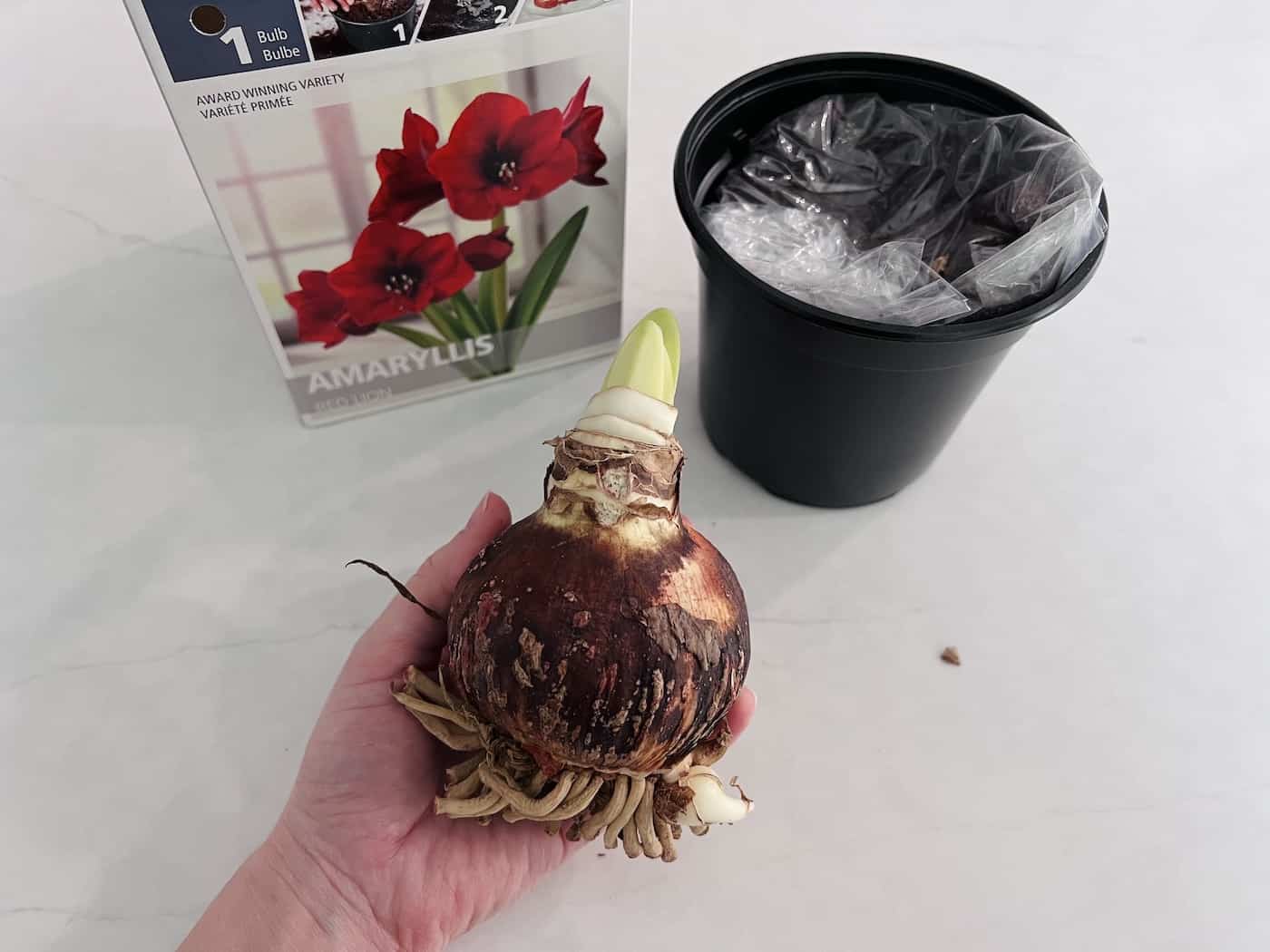
Planting Red Lion amaryllis bulbs
Red Lion amaryllis is a beautiful and easy-to-grow flower that will bring color to your garden. It’s important to know the basics of planting this bulb so it can thrive in its new home.
Red Lion amaryllis prefers well-draining soil with a neutral pH balance, such as potting mix or composted manure. Avoid using regular garden soil because it may contain too much clay or sand which could affect the plant’s growth.
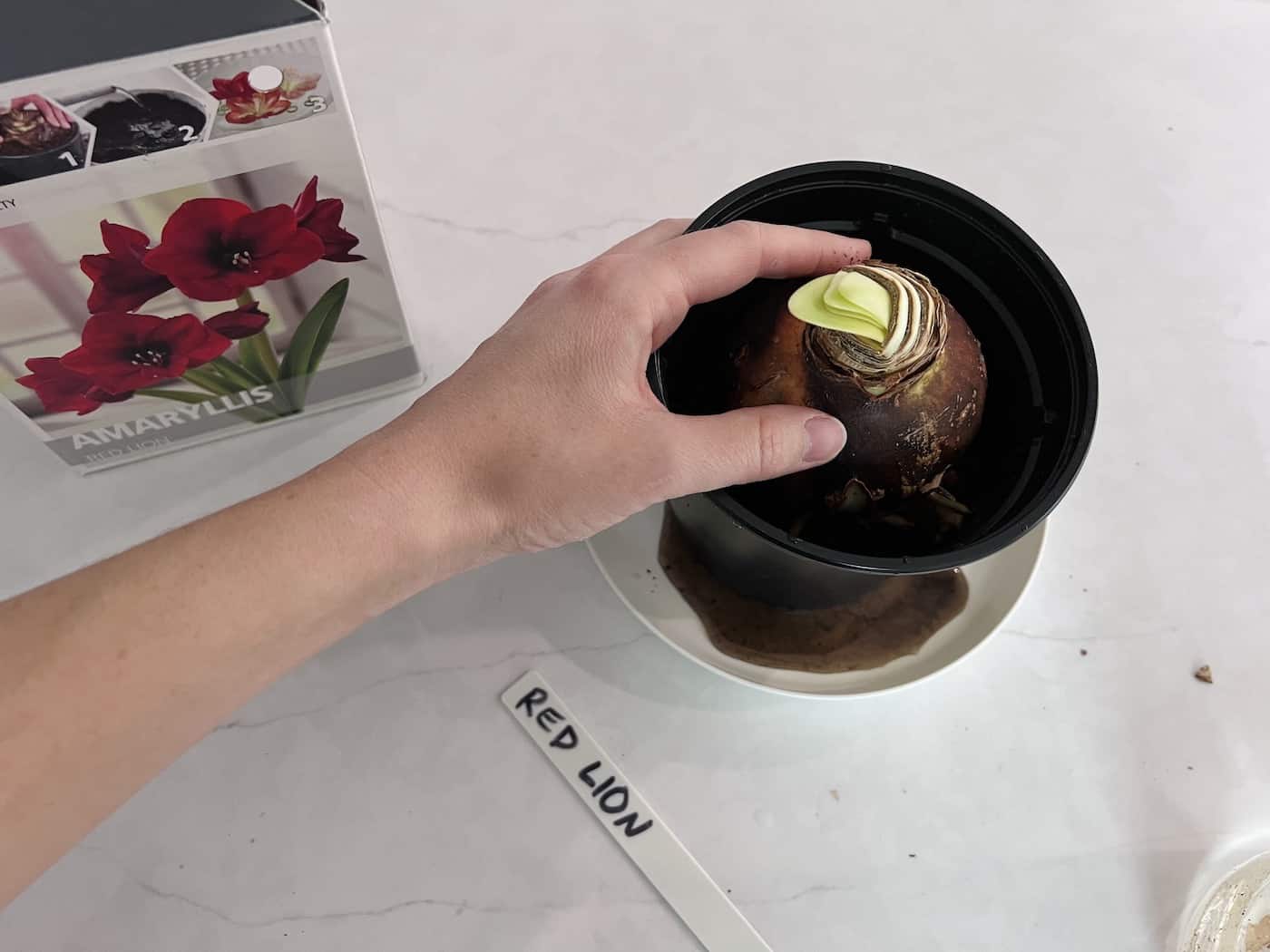
If planting indoors, plant the bulb so the top of it sticks out of the soil. The planting hole should be only about 2/3 as deep as the bulb is tall.
If planting outdoors, plant the bulb two to three times deeper than its height in the soil, making sure not to cover any of the leaves on top of the bulb. This will help ensure proper root development for strong stem and leaf growth later on.
Water deeply after planting. Place your plant in an area where it gets plenty of sunlight throughout most days; however, avoid direct afternoon sun as this can cause scorching leaves and stems if left unprotected from heat sources like concrete walls or metal fences that absorb heat quickly during summer months.
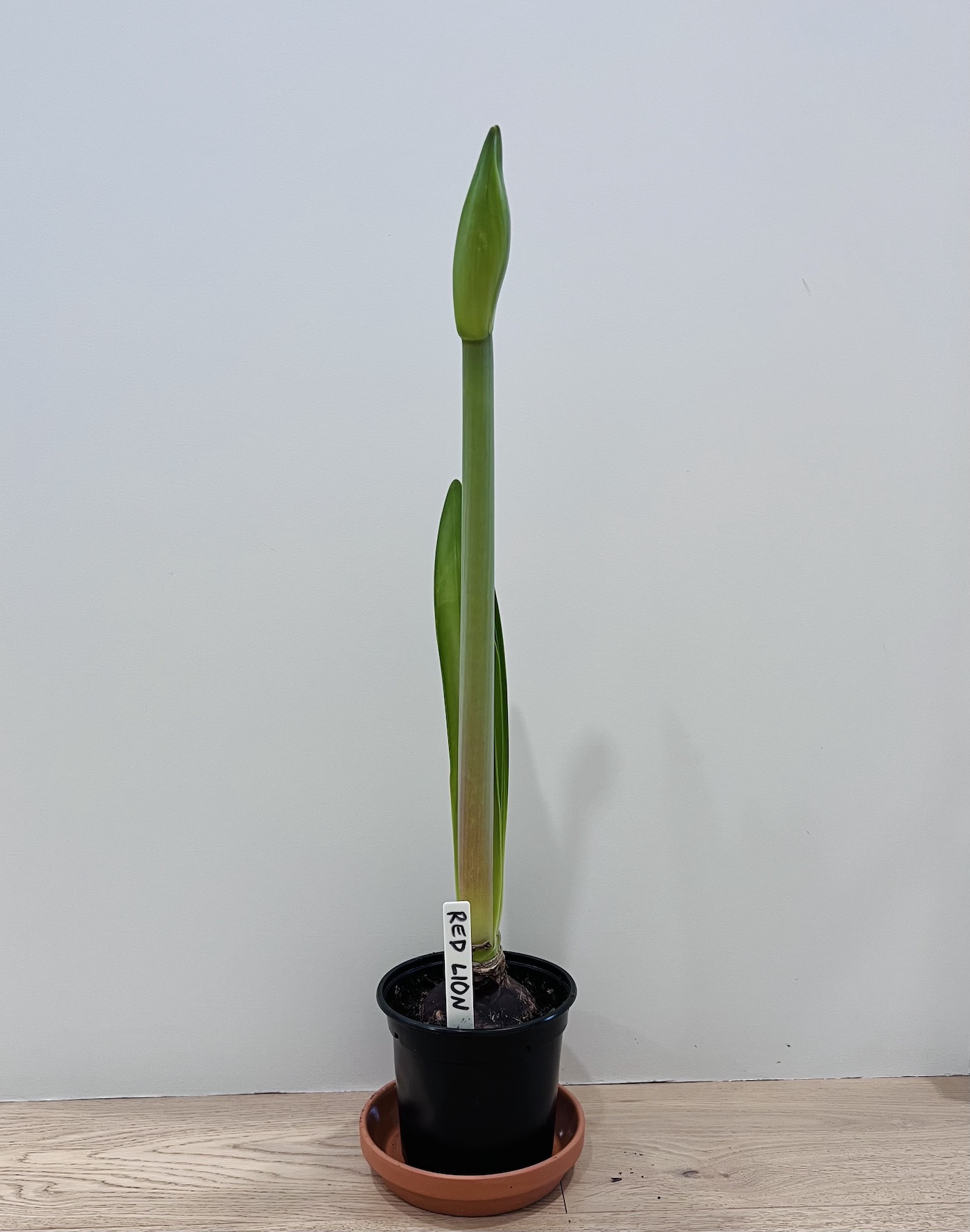
Caring for Red Lion amaryllis plants
Here are the plant care basics for Red Lion amaryllis.
Watering
Red Lion Amaryllis should be watered regularly, but not too often. Water when the top inch of soil is dry to the touch and avoid overwatering as this can cause root rot. Allow any excess water to drain away from the plant after watering.
Fertilizing
Fertilize your Red Lion Amaryllis every two weeks with a balanced fertilizer during its growing season (spring through fall). Avoid fertilizing in winter when it’s dormant.
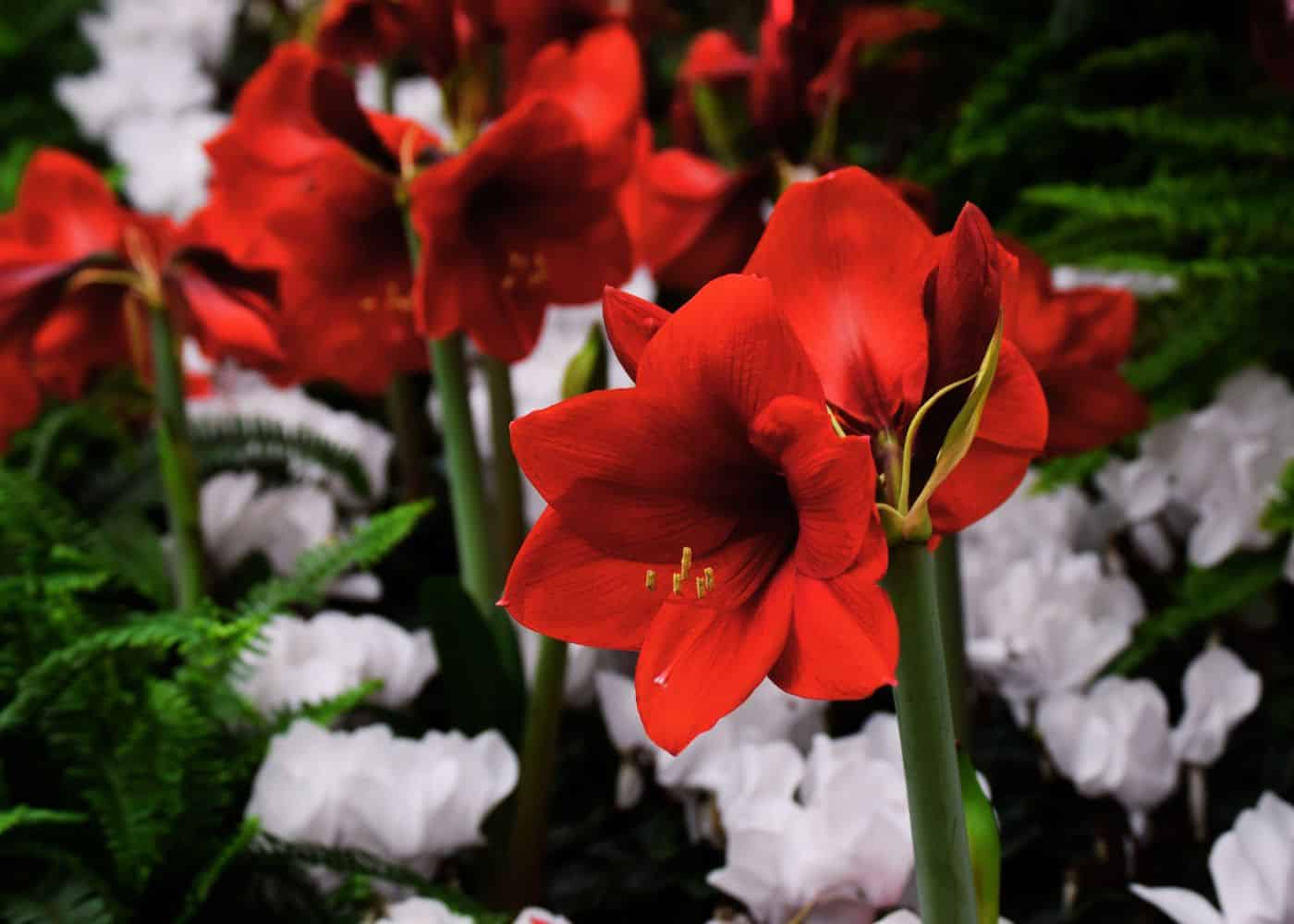
Pruning
Prune off dead or dying leaves as needed throughout the year, using sharp scissors or pruning shears for larger stems. This will help promote healthy growth and flowering of new blooms.
Light, temperature, and humidity
Place your Red Lion Amaryllis in an area that receives bright indirect sunlight for at least 6 hours each day and keep temperatures between 65-75°F (18-24°C). Too much direct sun can scorch the leaves, while too little light may prevent flowering altogether.
If you want all the flowers to bloom simultaneously (like for photos or a flower show), its time to increase the temperature. Keep the bulb at a warm temperature of 80°-85°F (27°-29°C) using a seedling heat map or a small heater. The warmer temperatures encourage the bulb to send up all its stalks at once.
Keep humidity levels comfortable (not too dry) by misting your amaryllis daily with a spray bottle filled with distilled water if possible. However, ensure good air circulation around it so that moisture does not build up on its leaves, which could lead to fungal diseases such as powdery mildew or leaf spot disease.
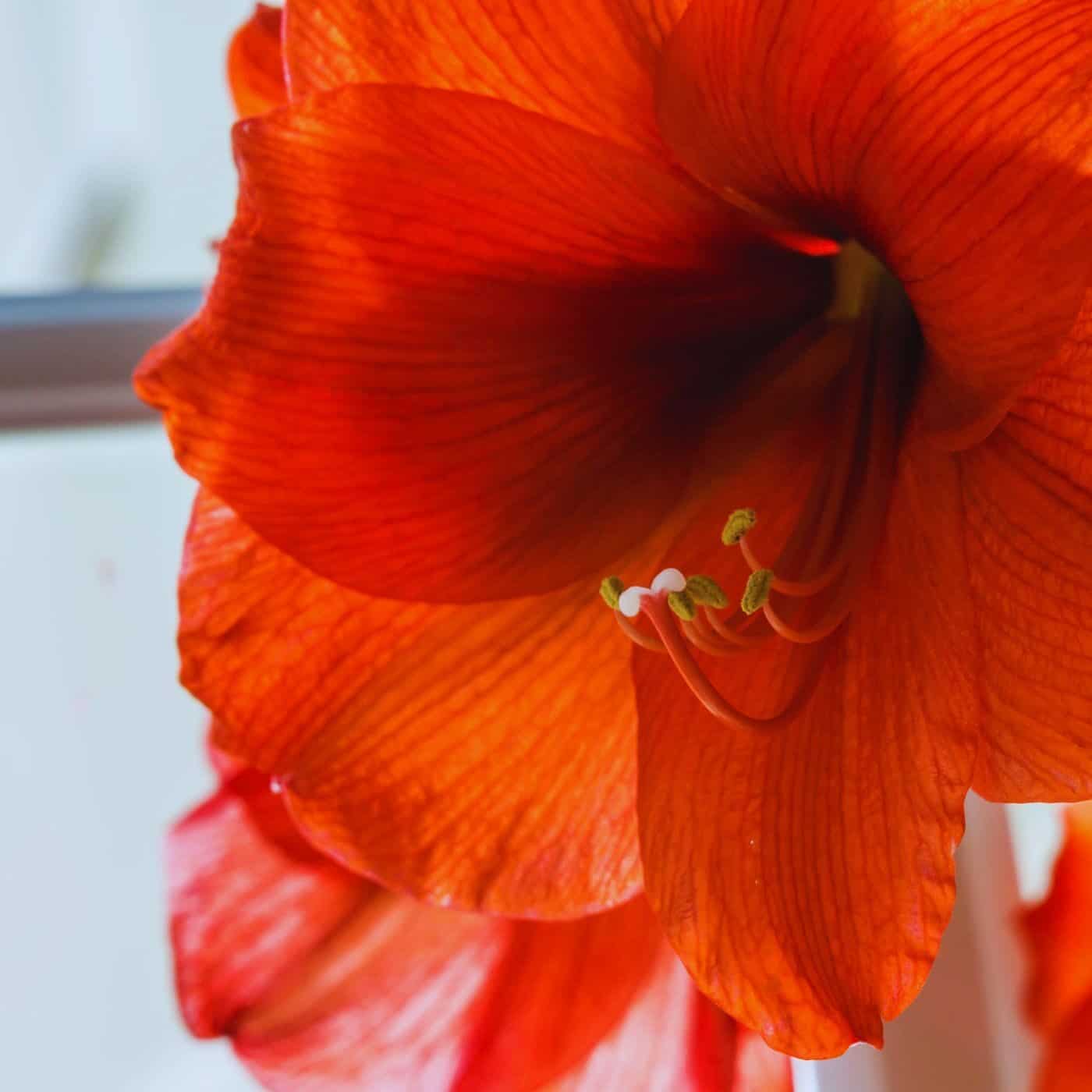
Benefits of growing Red Lion Amaryllis
Red Lion amaryllis is a stunning flower that will add color and beauty to any garden or home. The bright red blooms of the Red Lion Amaryllis are sure to make an eye-catching statement in your space. These flowers are also known for their long-lasting blooms, which can last up to two months with proper care.
The Red Lion Amaryllis is easy to grow and maintain, making it ideal for beginner gardeners who don’t have a lot of experience with gardening. All you need is some potting soil, fertilizer, and water. With just a few simple steps you can easily get started growing these beautiful flowers in no time at all.
One of the great benefits of growing Red Lion Amaryllis is that they require very little maintenance once planted. You won’t need to worry about pruning or trimming them as they naturally stay full and lush without much effort on your part. They also thrive in both sunny and shady areas so you don’t have to worry about finding the perfect spot for them either.
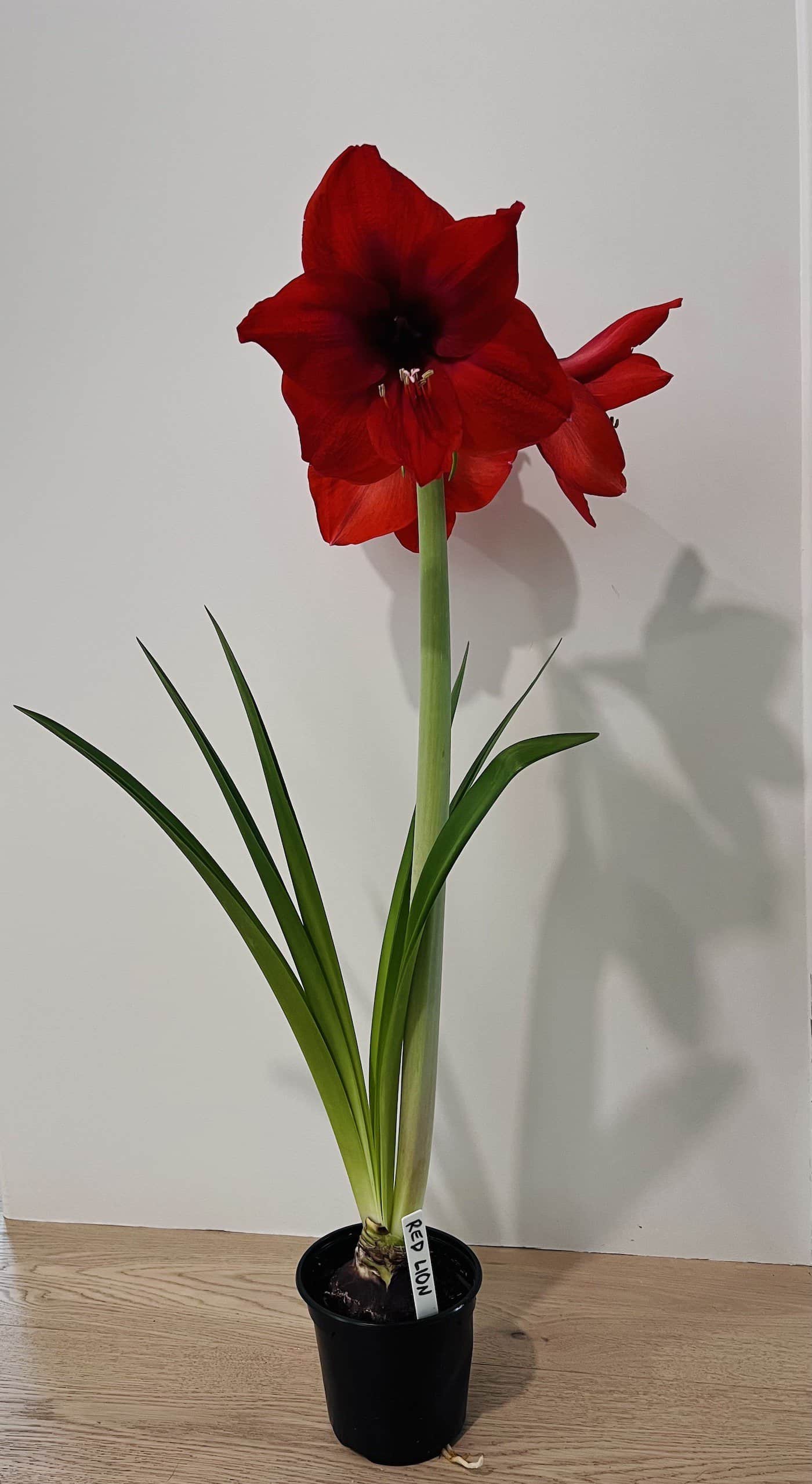
Another benefit of growing Red Lion Amaryllis is that they attract hummingbirds and butterflies due to their vibrant colors and sweet nectar scent. This makes them great additions if you want more wildlife activity around your home or garden area. Plus, watching these animals flutter around your plants can be quite calming after a long day at work or school.
Finally, one of the best benefits of having Red Lion amaryllises in your yard or home is that they come back year after year with minimal effort from you. Once established, these flowers will bloom again each season without needing too much attention from their gardener, making it an ideal choice for busy homeowners who still want beautiful plants but don’t have time for constant upkeep every day.
Growing Red Lion Amaryllis can bring beauty and cheer to your home, but it’s important to know how to care for them properly. In the next section, we’ll discuss troubleshooting common issues with Red Lion Amaryllis.
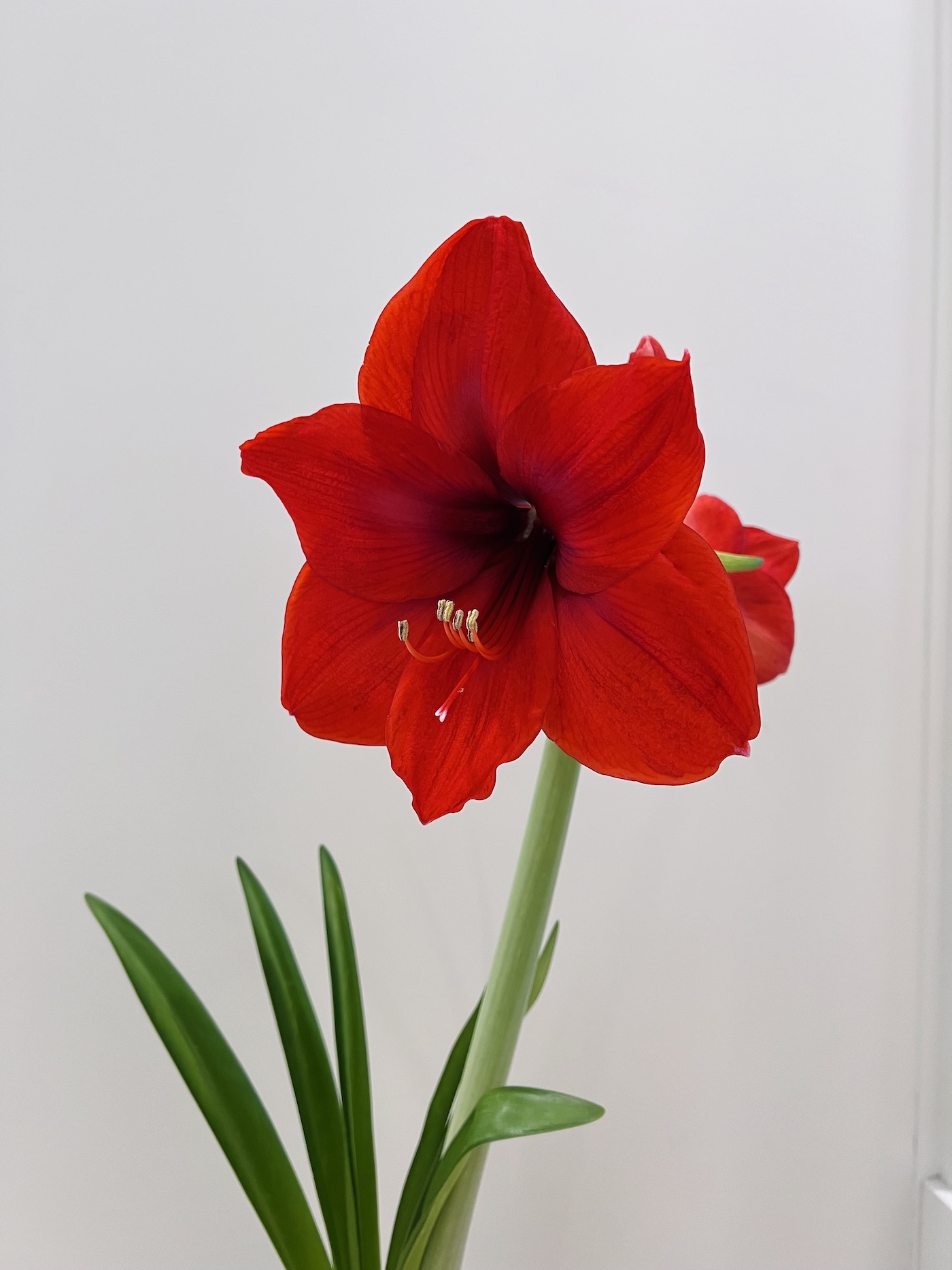
Troubleshooting common issues with Red Lion amaryllis plants
Here are some common issues that can occur with these flowers.
Yellowing Leaves
If you notice your Red Lion Amaryllis leaves turning yellow, it could be a sign of overwatering. Make sure to water the plant only when the soil is dry and not on a regular schedule. Too much water can cause root rot and lead to yellow leaves.
Lack of Blooms
If your Red Lion Amaryllis isn’t blooming, it could be due to insufficient light or too much fertilizer. Place the pot in an area with bright indirect sunlight for at least 6 hours per day and avoid over-fertilizing as this can prevent flowering.
Stunted Growth
Stunted growth may occur if your amaryllis is planted in too small of a pot or if there are not enough nutrients in the soil. To fix this issue, transplant into a larger container with fresh potting mix that contains compost or other organic matter for added nutrition.
Leggy Stems
Leggy stems are caused by lack of sunlight which prevents proper stem development and causes weak stems that cannot support large flowers properly. Move your amaryllis closer to a window where it will receive more light throughout the day so its stems can become stronger and healthier looking over time.
Drooping flowers are usually caused by either insufficient moisture or heat stress from being placed near direct sunlight during hot summer days; both conditions will cause wilting petals quickly after they have bloomed. To prevent this, keep your amaryllis away from direct sun exposure while also providing adequate amounts of water regularly but not too often as overwatering can still cause droopy petals even though it is less common than underwatering.
By troubleshooting common issues with Red Lion Amaryllis, you can ensure that your plant is healthy and thriving. Now let’s explore some creative ways to display it.
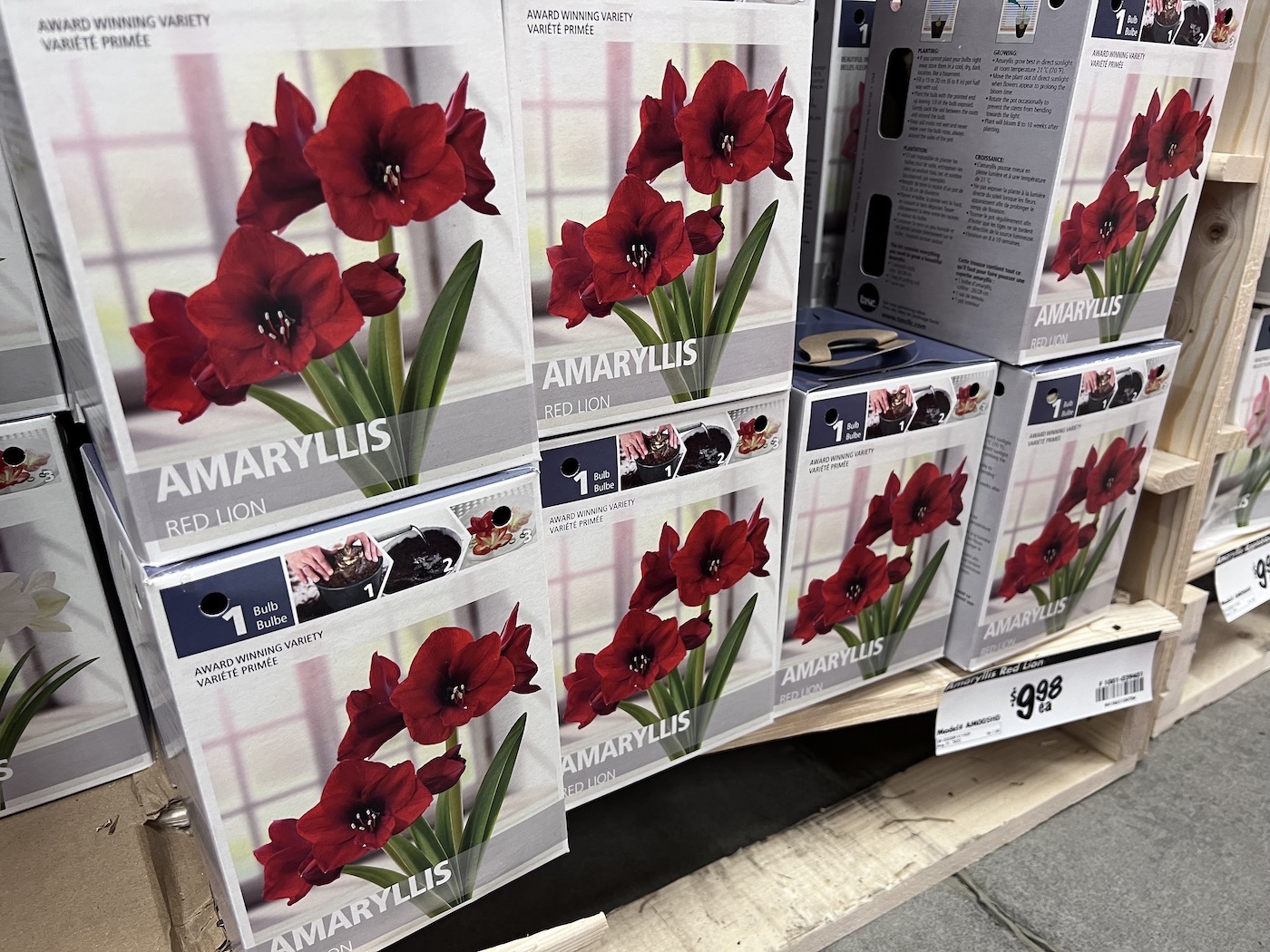
Creative ways to display your Red Lion amaryllis
Adding Red Lion Amaryllis to your garden or home is a great way to bring beauty and color into any space. Here are some creative ideas for displaying them:
Flower arrangements
Create stunning flower arrangements with Red Lion Amaryllis by combining them with other flowers such as roses, daisies, or lilies. Place the arrangement in a vase on your dining room table or kitchen countertop for an eye-catching display.
Outdoor planters
Plant several bulbs of Red Lion Amaryllis in outdoor planters and place them around your patio or deck area for a beautiful splash of color that will last throughout the season. Make sure you choose planters that have good drainage so they don’t become waterlogged when it rains heavily.
Hanging baskets
Hang baskets filled with Red Lion Amaryllis from porch railings, tree branches, or even window boxes to add an extra touch of charm to any outdoor space. Choose colorful pots and make sure they are securely attached before hanging them up.
Window boxes
Fill window boxes with soil and plant several bulbs of Red Lion Amaryllis inside for a unique display that can be seen from both inside and outside the house. Make sure you use soil specifically designed for potted plants so it drains properly and doesn’t become too soggy after watering it regularly during hot summer days.
Centerpieces
Table centerpieces can be made with several stems of amaryllises in small glass vases along the center of tables at special events like weddings or dinner parties. This creates an elegant centerpiece that will impress all your guests. You may also choose to mix in other types of flowers such as tulips, daffodils, hyacinths, etc. if desired.
With a few simple steps and some creativity, you can turn your Red Lion Amaryllis into an eye-catching display. Now let’s explore what to do with the amaryllis after it blooms.
What to do with an amaryllis after it blooms?
Once your Red Lion amaryllis has finished blooming, you don’t have to throw it away. You can keep the bulb and use it for years to come. Amaryllis is a perennial plant and will come back year after year as long as the bulb is allowed to recharge after blooming and doesn’t get too cold during the winter.
Here are some tips on what to do with amaryllis after it blooms:
Cutting back stalks
After the flowers have faded, cut back the stalks at their base. This will help conserve energy in the bulb so that it can be used for next year’s bloom.
Light requirements
Now, its time to make sure the leaves get lots of sunlight for photosynthesis so that the bulb has enough energy to start to form next year’s flower buds. If its still winter, keep the plant inside under a plant light. If its mild out, with nighttime lows not below about 50°F (10°C), then put the plant out in the direct sunlight. Keep it well-watered and keep fertilizing.
Fertilizing the plant
Fertilize your Red Lion amaryllis once a month during its growing season with a balanced fertilizer. Follow the directions on the package carefully and avoid over-fertilizing which could damage your plant.
Watering amaryllis
Water regularly while actively growing but reduce watering when dormant (no leaves). Keep soil moist but not soggy, especially during summer months when temperatures rise and water evaporates quickly from soil surface.
Repotting your container plant
Repot every two or three years into fresh potting mix using a container one size larger than before if necessary; this will give more room for new roots to grow and provide better drainage for excess water that may accumulate in the bottom of the pot due to overwatering or heavy rains outside. Make sure there are adequate drainage holes in the bottom of the container before repotting.
Storing bulbs during dormancy
When temperatures drop below 50°F (10°C), stop watering completely and store bulbs in a cool dry place until springtime arrives again – typically between 55°F (13°C) – 65°F (18°C). Place them inside paper bags lined with newspaper or tissue paper then seal them tightly shut so no light gets through; this helps prevent mold growth while keeping humidity levels low enough that they won’t rot away either.
In early springtime when temperatures start rising above 50 degrees Fahrenheit again, take out stored bulbs from the paper bag/newspaper lining and replant them into fresh potting mix following the same steps outlined earlier under “Planting Your Amaryllis” section. Make sure there are adequate drainage holes in the bottom of the container before repotting.
After it blooms, you can remove the dead flowers and leaves to make room for new growth. With its vibrant red petals, the amaryllis flower is also a symbol of love and passion – let’s explore what this means in the next section.

Red amaryllis flower meaning
The red amaryllis is a stunning flower that symbolizes strength and determination. It’s the perfect gift for someone who has achieved success or overcome difficult obstacles in life. In the language of flowers, it conveys admiration and respect for their accomplishments.
The bright red color of amaryllis also stands for love, passion, and desire. It’s often given as a romantic gesture to express feelings of deep affection towards another person. The vibrant hue can also be used to show appreciation or gratitude towards someone special in your life.
Amaryllis is also associated with joy and happiness due to its cheerful appearance. They make great gifts during times of celebration such as birthdays, anniversaries, graduations, weddings, holidays, etc., as they bring cheerfulness into any room they are placed in.
In addition to its symbolic meaning, the amaryllis is known for its beauty and elegance too. Its tall stem topped with multiple blooms makes it stand out from other flowers – making it a favorite among gardeners all over the world. Plus its long-lasting blooms ensure that you get plenty of enjoyment out of them before they eventually fade away – making them ideal decorations both indoors and outdoors alike.
Finally, when gifting an amaryllis flower bouquet or arrangement, consider adding some foliage like eucalyptus leaves or fern fronds which will add texture contrast against the large petals while further emphasizing its symbolism. This will create a more aesthetically pleasing and meaningful gift that can be enjoyed for many years to come.
FAQs about Red Lion amaryllis
How do you take care of an amaryllis ‘Red Lion’?
To take care of an amaryllis Red Lion, you should start by selecting a pot that is slightly larger than the bulb. Fill it with well-draining soil and place the bulb on top, making sure to cover two-thirds of its height.
Water regularly, allowing the soil to dry out between waterings. Place in bright indirect light and fertilize every other week during active growth periods. When blooms appear, cut off spent flowers but leave foliage until it turns yellow or brown before removing from the plant. With proper care your amaryllis will bloom for years.
Can red lion amaryllis be planted outside?
No, red lion amaryllis cannot be planted outside. These plants are tropical and prefer warm temperatures, so they will not survive in colder climates. They also require plenty of sunlight and humidity to thrive, which is difficult to achieve outdoors in most North American regions. Planting them indoors or in a greenhouse is the best way to ensure their health and longevity. With proper care, red lion amaryllis can provide beautiful blooms for many years.
Does amaryllis come back every year?
Yes, amaryllis does come back every year. It is a hardy bulb that can survive cold winters and hot summers. With proper care, it will flower again in the spring or summer months after being dormant for several months during the winter season.
Amaryllis bulbs should be planted in well-draining soil with plenty of organic matter and watered regularly throughout the growing season. When temperatures start to drop, reduce watering until dormancy sets in before bringing them indoors for protection from extreme weather conditions. With the right care, amaryllis bulbs will bloom again year after year.
How long does it take for a red lion amaryllis to bloom?
The Red Lion Amaryllis is a popular variety of amaryllis, and it typically takes between 6 to 8 weeks for the flower buds to appear. Once the buds are visible, they will open in about two weeks.
The entire process from planting to flowering can take up to 10 weeks or more, depending on environmental conditions such as temperature and light exposure. It’s important to keep soil moist but not soggy during this time period so that the bulb has enough moisture while developing its flowers. With proper care, you should be able to enjoy your beautiful blooms soon.
Before you go…
With the right planting, caring, and creative display techniques, you can enjoy the vibrant red blooms of this unique flower. The meaning behind the red amaryllis also adds an extra layer of significance to its presence in your home or garden. Whether you’re looking for a way to brighten up your living space or want to give someone special a meaningful gift, the Red Lion amaryllis is sure to be appreciated.
Resources
- All about how to fertilize flowering bulbs
- How to plant tulips in a pot
- How to plant paperwhite bulbs
References
- Bulb forcing for beginners and the seriously smitten, by Art Wolk
- Hearst garden guides: Bulbs, by John E. Bryan
Need more info?
Are you interested in learning more about indoor plants? Here are our best articles about growing plants indoors!


